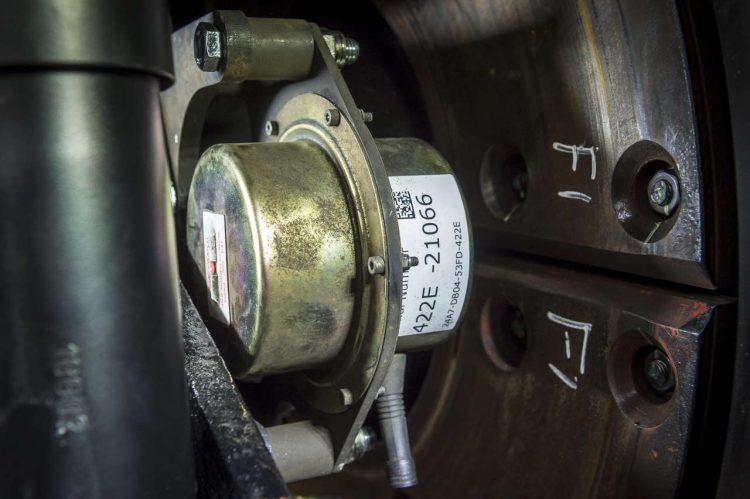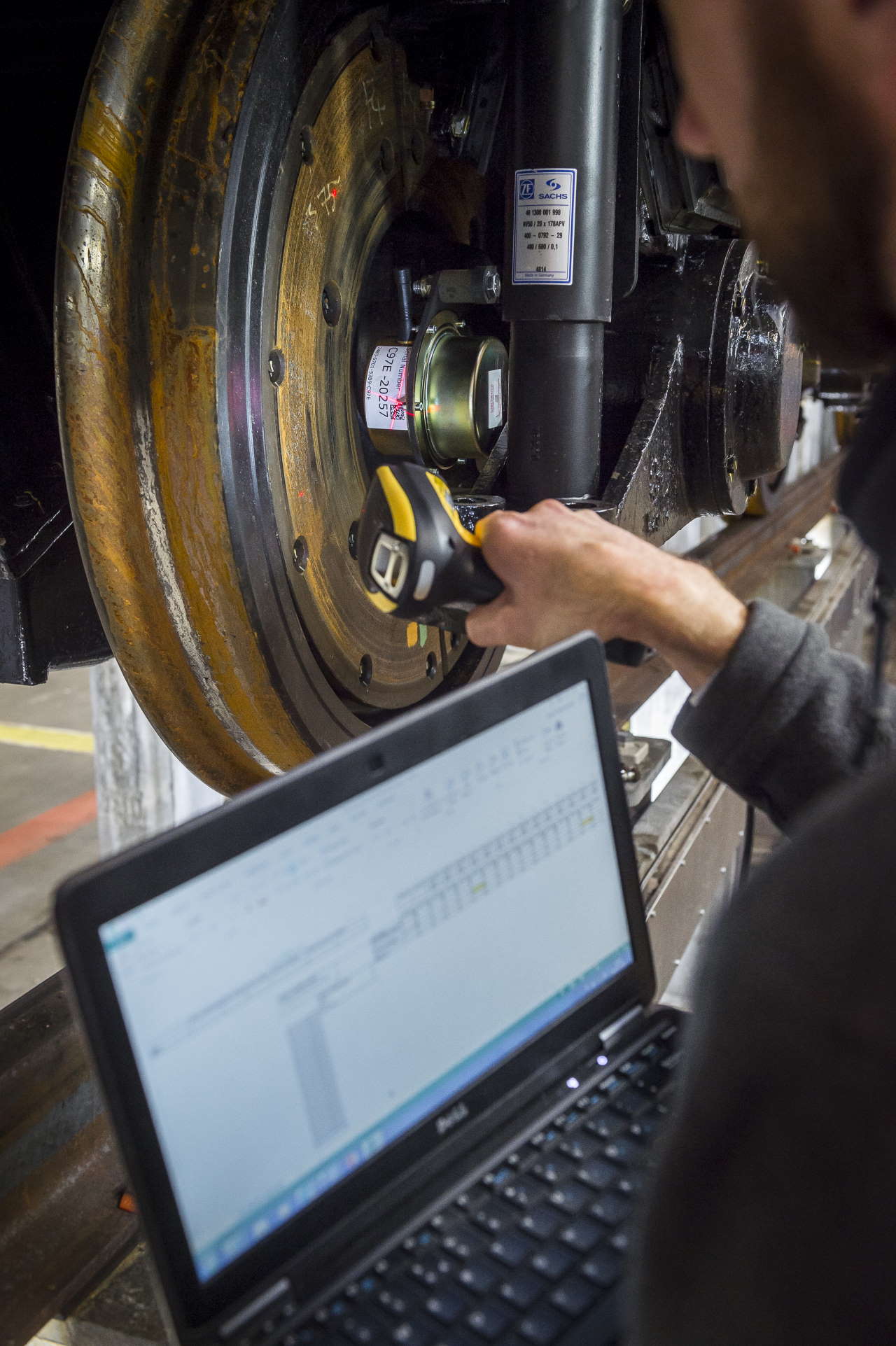Digital sensors are being installed on some railway lines in Scotland that will monitor, and eventually predict, sections of track that are likely to develop faults and require maintenance.
The technology has been developed by Hitachi-Perpetuum, and has been deployed in conjunction with Network Rail, Porterbrook, and ScotRail.
The sensors spot track defects, thereby minimising rail disruption and improving safety. A successful trial could pave the way for a smart mobility system that reduces passenger disruption and maintenance costs, while improving safety.
The monitoring equipment is currently installed on trains across Scotland’s networks, including on the North Clyde Line, The Borders, and Fife Circle. By fitting digital sensors to trains, the pilot offers major benefits to the railway that include:
- reducing disruption to passengers and improving safety;
- lessening the risk to track workers and cutting maintenance costs;
- improving the performance of the network and the ride quality of trains;
- a further step towards intelligent rail infrastructure that can predict and plan preventative maintenance.
The contract with Hitachi-Perpetuum follows successful trials of the technology on the West Coast main line in 2019. It is self-powered and measures data between the train and the track in real-time. This is achieved by fitting sensors with gyroscopes and accelerometers in carriages or on the wheels of trains already in passenger service.
At this stage of the development, it is possible to identify the onset of warping or changes to the track . By applying digital analytical tools, a picture of areas that are at risk can be built up, identifying locations that require inspection or maintenance in the future. The ability to identify and fix this before it causes passenger disruption means it can be a preventative countermeasure, while simultaneously creating intelligent rail infrastructure.

Regular use of railway lines means that over time, parts track degrade and need repair, resulting in bumpy journeys for passengers, speed limits, and weeks of potentially disruptive maintenance. At present, locations of rough riding are reported by drivers, followed by a manual inspection by maintenance crews walking on the track.
Perpetuum’s solution automates this monitoring and reporting, which improves the safety of the railway.
The digital technology brings the following benefits:
- the ability to identify track faults and fix them early will improve reliability and minimise disruption;
- the data collected can help identify trains that are more prone to poor ride quality over certain types of track, which in turn can help identify where preventative maintenance can take place on train to maintain passenger comfort;
- the remote sensors are particularly easy to fit to existing fleets as they are self-powered and require no extra wiring or power sources.
Jim Brewin, Head of UK & Ireland, Hitachi Rail said:
“Introducing in-service monitoring technology to improve ride quality demonstrates how Hitachi Rail can utilise digital solutions that support track maintenance. This ability to bring train and track together can solve issues for both passengers and train operators.
“Hitachi Rail is committed to constantly pioneering and championing new technology to make our railways safer and more reliable.”
Stephanie Klecha, Head of Digital Services, Porterbrook said:
“Porterbrook is delighted to support Perpetuum’s data-led approach alongside train operators and Network Rail which can deliver a better passenger service across these fleets. This project is a great example of how rolling stock data can improve and enhance the industry’s understanding of track behaviour in the run-up to rough ride events. This will enable tailored proactive maintenance to solve this important industry challenge.”
David Lister, Safety, Engineering & Sustainability Director, ScotRail, said:
“The performance and reliability of our trains is always a top priority which requires both reliable trains and reliable track infrastructure so it’s great to see Hitachi Rail and Perpetuum developing this innovative digital technology to monitor and then predict which sections of track need maintenance using technology fitted to our passenger trains.
“Anything that can increase comfort for our customers by making their journeys smoother, while reducing the need for unplanned downtime for stretches of track is to be welcomed and is a tangible example of train and track working together to provide a safe, efficient and reliable railway.”





Responses